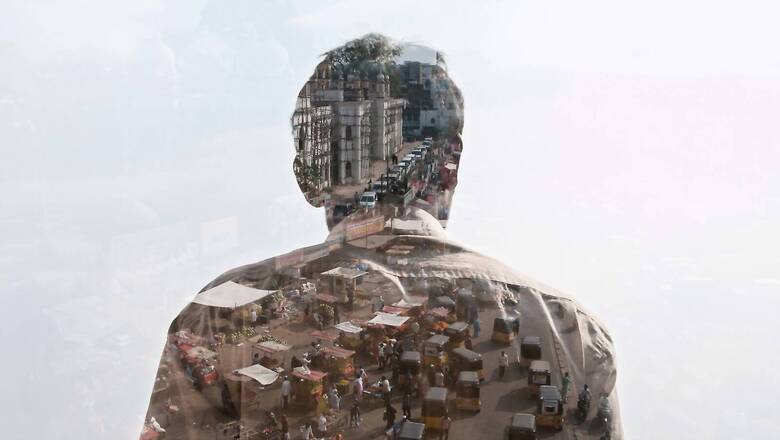
views
Public and academic discourse in India often alludes to an oppressive Hindu caste system. An oppressive Hindu caste system has become a staple of discourse about Hinduism. The purpose of this post is to examine this claim in the light of statistical reality. Statistical information regarding the phenomenon of the caste system was collected by the Pew Research Centre, as a part of its project entitled Religion in India: Tolerance and Segregation by Neha Sahgal, Johnathan Evans, Ariana Monique Salazar, Kelsey Jo Starr and Manolo Corichi.
This report was published on June 29, 2021. The survey was carried out between late 2019 and early 2020, based on nearly 30,000 interviews conducted in nearly 17 languages. What follows is an attempt to examine the reality of the caste system in the light of the data collected in this report, which has a special section devoted to “Attitude Towards Caste” (pp. 96-107).
The first important finding according to this report, is that the caste system is not confined to Hinduism. According to it, “nearly all Indians today identify with a caste, regardless of their religion” (p. 96). If, in contemporary India, caste pervades all religions found in India, then it is obviously misleading to refer to the caste system as the ‘Hindu caste system’, because it is in fact the ‘Indian caste system’, or even the ‘South Asian caste system.’, because caste is also found in Pakistan, and Bangladesh. This is one way in which the evidence provided by the Pew Research Centre Survey compels us to revise our conception of the caste system. It should be considered an ‘Indian caste system’.
The second important finding of this report is the following.
The manner in which the castes are grouped nowadays in India, as reflected by this survey, follows the following pattern:
- General Category Castes
- Other Backward Classes
- Scheduled Castes
- Scheduled Tribes
These categories apply across all the religions in India, unlike the categories of Brahmaṇa, Kṣhatriya, Vaishya, and Shudra, which are Hindu categories. This is one more way in which the caste system is no longer a Hindu caste system but has become an Indian caste system. What has happened is that the first three varṇas are compressed in this new scheme into the General Category, while the fourth varṇa of the Shudras is now expanded into the three other categories of Other Backward Classes, “Scheduled Castes”, and Scheduled Tribes.
A third finding is related to discrimination based on caste.
One tends to associate the caste system –– whether in its Hinduised version or in its Indianised version –– with discrimination. In this respect, the finding of the Pew Research Centre is nothing less than surprising. This report makes a clear distinction between class segregation and caste discrimination. There is a natural tendency to assume that such segregation involves or implies discrimination.
Caste segregation remains prevalent in India. For example, a substantial share of Brahmins say they would not be willing to accept a person who belongs to a Scheduled Caste as a neighbour. But most Indians do not feel there is a lot of caste discrimination in the country, and two-thirds of those who identify with Scheduled Castes or Tribes say there is not widespread discrimination against their respective groups. This feeling may reflect personal experience: 82% of Indians say they have not personally faced discrimination based on their caste in the year prior to taking the survey (p. 96).
It has been often alleged that because the upper castes in India do not encounter caste discrimination, they are unable to spot it as well. In view of this, it is striking that although the so-called lower castes did not claim there is no caste discrimination in India, they certainly did not believe that there was a lot of caste discrimination in India. For instance, when asked if there is or is not “a lot of discrimination” against Scheduled Castes, Scheduled Tribes and Other Backward Classes in India, most people say there isn’t a lot of caste discrimination. Fewer than one-quarter of Indians say they see evidence of widespread discrimination against Scheduled Castes (20%), Scheduled Tribes (19%) or Other Backward Classes (16%).
Generally, people belonging to lower castes share the perception that there isn’t widespread caste discrimination in India. For instance, just 13% of those who identify with OBCs say there is a lot of discrimination against Backward Classes. Members of Scheduled Castes and Tribes are slightly more likely than members of other castes to say there is a lot of caste discrimination against their groups — but, still, only about a quarter take this position (p.100).
We see then, that the caste system is neither Hindu (it is Indian) nor perceived as discriminatory in a major way.
Yet another finding of the survey is worth noting.
It is also generally assumed that the lower castes would be opposed to the caste system. If, however, one measure of caste is a reluctance to marry outside one’s caste, then this sentiment is surprisingly shared by lower castes as well. The relevant figures are as follows: 64% of Brahmin men and 66% of Brahmin women were opposed to inter-caste marriage; 59% of men and 60% of women were opposed to inter-caste marriage in the Other General Category; 61% of men and 62% of women were opposed to inter-caste marriage in the Scheduled Castes/Tribes category; and 67% of men and 69% of women were opposed to inter-caste marriage in the Other/Most Backward Class category (p.106).
The figure for opposition to inter-caste marriage hovers around 60%, which might create the impression that the opposition is not that strong. But one should note the manner in which the question is phrased. The survey reports that the percentages are in the form of “Indian adults who say it is very important to stop someone from marrying into another caste” (p. 106). Emphasis in the original.) A majority of people, not only among Hindus (64%) but Muslims as well (74%), were opposed to marrying across caste lines, while less than half of Christians and Buddhists take that same position. The figure for the Sikhs is 58%, and the Jainas 61%.
The following finding of the survey must be considered extremely significant in the present context.
As another measure of caste segregation, the survey asked respondents whether it is very important, somewhat important, not too important or not at all important to stop men and women in their community from marrying into another caste. Generally, Indians feel it is equally important to stop both men and women from marrying outside of their caste. Strong majorities of Indians say it is at least “somewhat” important to stop men (79%) and women (80%) from marrying into another caste, including at least six-in-ten who say it is “very” important to stop this from happening regardless of gender (62% for men and 64% for women) (p. 106).
This report, therefore, seriously calls into question the following propositions associated with the caste system: 1) that the caste system is a Hindu phenomenon, 2) that caste segregation invariably involves caste discrimination, 3) that lower castes would like to see the caste system abolished, and 4) religions other than Hinduism would be strongly opposed to the caste system.
The author, formerly of the IAS, is the Birks Professor of Comparative Religion at McGill University in Montreal Canada, where he has taught for over thirty years. He has also taught in Australia and the United States and at Nalanda University in India. He has published extensively in the fields of Indian religions and world religions. Views expressed are personal.
Read all the Latest Opinions here













Comments
0 comment